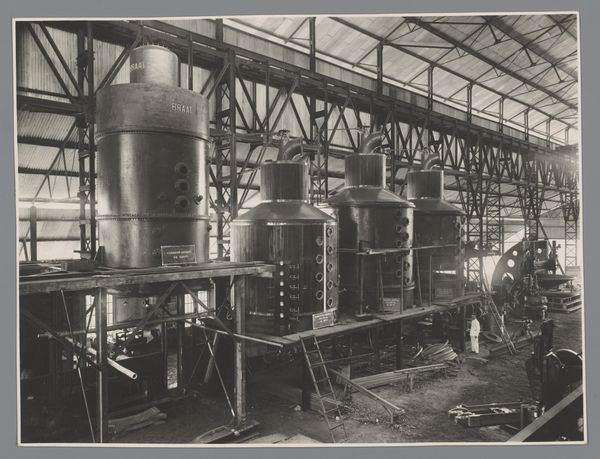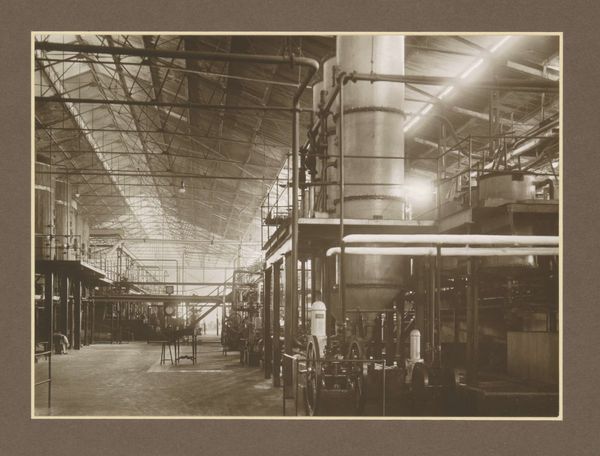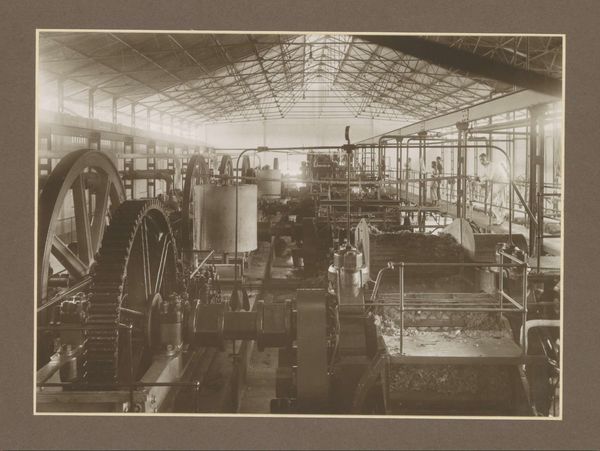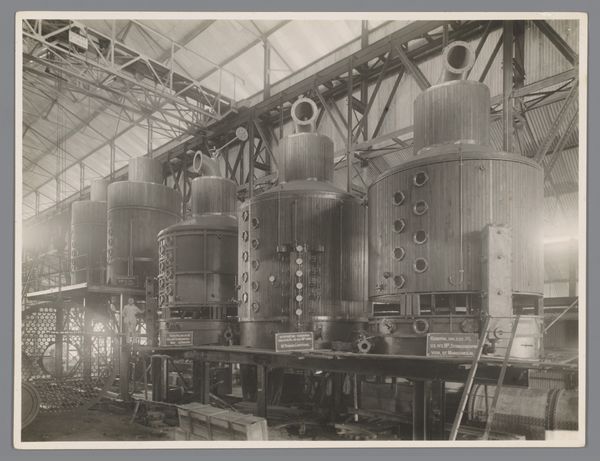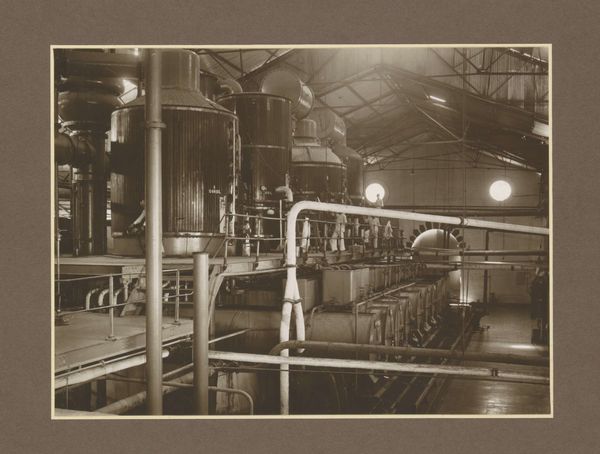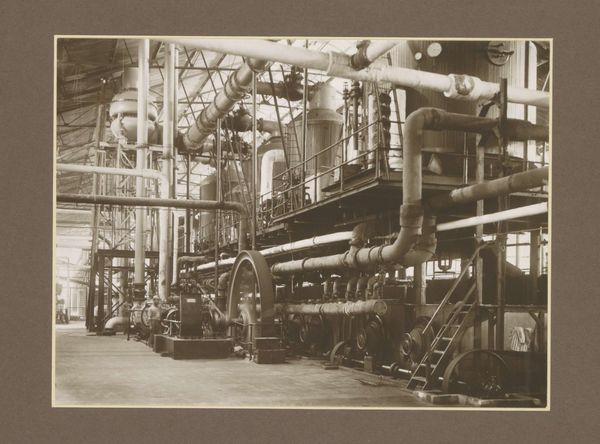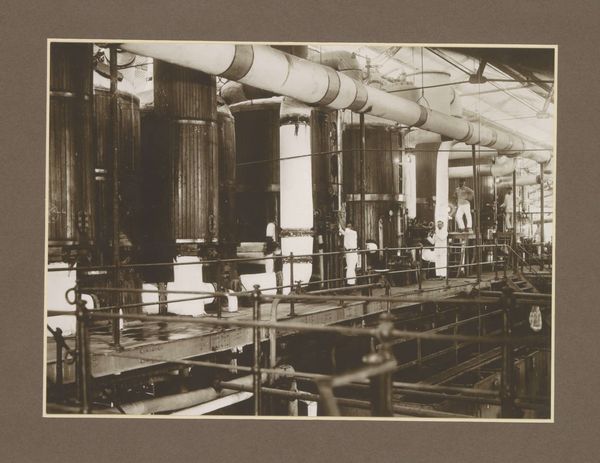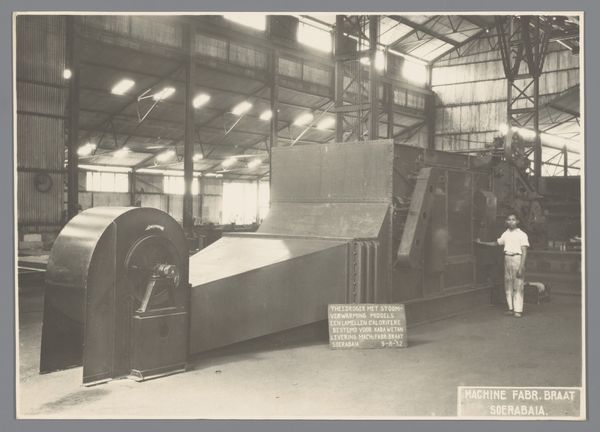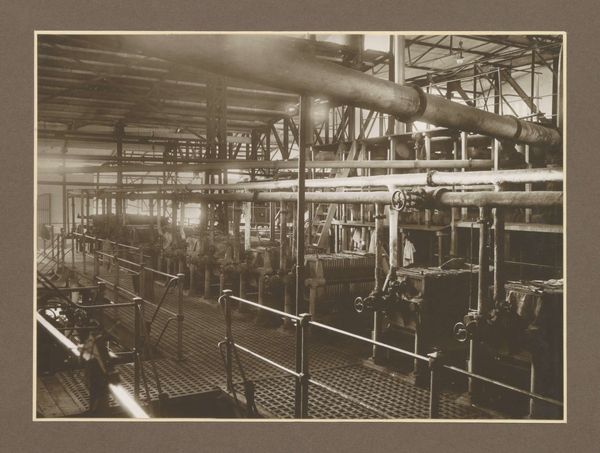
print, photography
# print
#
photography
#
cityscape
#
modernism
Dimensions: height 160 mm, width 208 mm
Copyright: Rijks Museum: Open Domain
Curator: The grimy yet striking photograph before us is titled "Sapweegtoestel," created in 1921, and is part of the Rijksmuseum's collection. Editor: It feels...stark. The massive scale of the machinery juxtaposed with those almost doll-like figures… there's an alienation present. I can almost taste the metal and smell the grease from here. Curator: Yes, the use of light and shadow definitely amplifies that industrial rawness. Think about what constitutes a 'cityscape' here; not boulevards, but cogs and pipes. How did that shaping of raw resources transform our environments and labour? What would the labourers have been experiencing, and how can we begin to imagine their emotional experience, so absent from the work. Editor: That contrast is so central to the image, it forces us to question labour conditions at the time. This photo aestheticizes labour as pure progress and utility, doesn't it? But it’s a progress fueled by potentially exploitative practices. And let’s think about how this kind of imagery would have been circulated - how does it act as propaganda. Curator: I think the photographer knew exactly what they were doing by choosing that composition, framing the scale, with these "cityscape" themes. We see those people standing within all that industrial progress, practically erased by the mechanical behemoths. Modernism had quite the impact as a school, and the means of production that supported it were very tactile, weren’t they? Editor: Indeed. And it leads me to wonder about its immediate audience, the politics embedded in such industrial portraiture and the intended narratives concerning labor. It looks at first blush a positive, progressive image, but its effect is ultimately unsettling to our eyes today. Curator: Looking at this as an object, this image exists thanks to technological progress too, photographic printing on photographic paper. I am keen to connect that materiality to all these industrial ones visible inside the work, as they’re very connected indeed. Editor: Ultimately, a stark portrayal laden with implications about labor, power, and the ambiguous face of progress, expertly captured through the camera’s lens. Curator: It’s remarkable to see how a seemingly straightforward image can prompt so much analysis. It makes one consider what kind of “cityscape” are we trying to build today and to question whose voices do they represent?
Comments
No comments
Be the first to comment and join the conversation on the ultimate creative platform.
